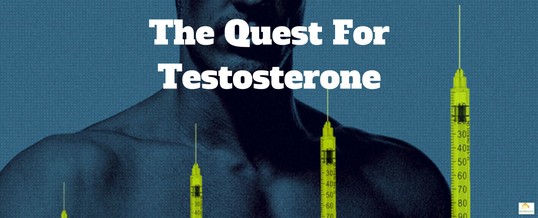The field of endocrinology (the study of hormones) stems from the medical and scientific quest for the essence of “maleness” and the answer to the question, what makes a man a man?
Decades before hormone replacement therapy became commonplace for women, men were practicing their own forms of testosterone replacement therapy. As early as 1400 BC, men were considering adding animal testicles to their diet to combat impotence. Later, in the mid- to late-1800s, German and French scientists experimented with removing and transplanting testicles on animals to try to isolate and replicate “male” characteristics.
A renowned scientist of that time was Charles-Edouard Brown-Séquard, a French physiologist, who had earlier discovered the significance of the adrenal glands. In his 70s, Brown-Séquard began looking for ways to extend his youth.
He developed a liquid form of ground animal testicles, which he injected under his skin. Soon after, he proclaimed in The Lancet that he had experienced a remarkable return of his overall energy and vitality, muscular strength and endurance, and mental agility. Unfortunately, the youthful characteristics did not last, and the scientific community ridiculed him. Subsequently, further research involving testicle extracts went out of favor for nearly 40 years.
Finally, during the 1920s, a University of Chicago organic chemist named Fred C. Koch resurrected Brown-Séquard’s work. Koch’s advantage was a fortunate combination of being close to the Chicago stockyards (an inexpensive source of bull testicles) and having a talented and persistent medical student who spent countless hours extracting the contents of testicles in search of the elusive male hormone. They eventually succeeded and reported that 40 pounds of bull testicles yielded a minute quantity (20 mg) of a substance that would temporarily restore castrated roosters’ “roosterhood” when injected over a period of weeks. Even more remarkably, their testicular extract worked equally well in castrated pigs and rats, too.
Other scientists quickly followed in their footsteps and soon isolated the active hormone, which we now call testosterone. They also discovered that, while the testes produce testosterone, they actually contain very little of it and do not store reserves that can be tapped (as earlier scientists had assumed). As soon as it is produced, testosterone works its way into the bloodstream and disperses to different parts of the body.
Frustrated by the daunting task of extracting minute amounts of the hormone from testicular tissue, researchers began looking for alternative approaches and discovered that they could produce testosterone from a more abundant substance — cholesterol — which is, in fact, basically how the body does it.
As it turns out, the testosterone produced from cholesterol is identical to the testosterone that the body produces naturally. This discovery opened the door to large-scale testosterone research.
But, before we continue, it is important to understand the distinction between “natural” (or bioidentical) and “un-natural” (or synthetic) hormones.

